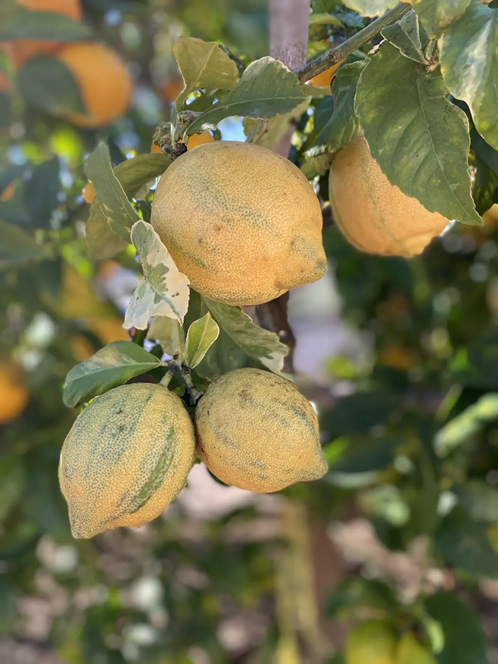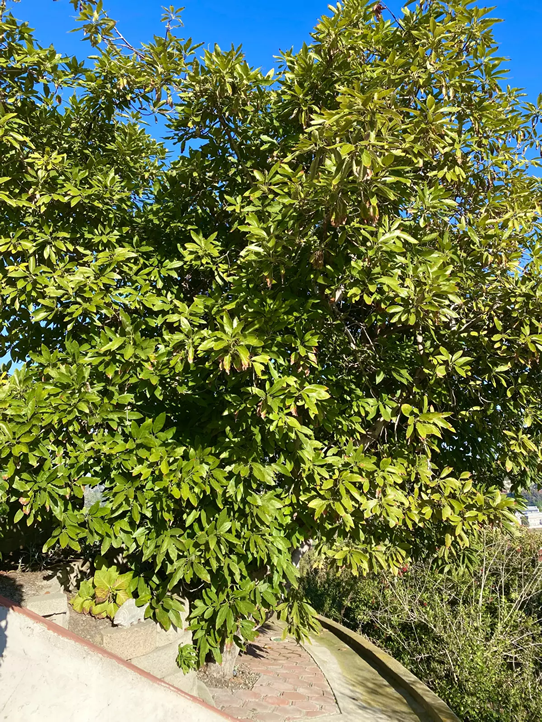Winter is pruning season for a reason

Winter is the best season to prune evergreen fruit trees like this Pink Lemonade lemon tree. (Jodi Bay)
Winter is when I do most of my fruit tree pruning. Why most and not all? In which part of winter?
Let’s get into the details ...
First, let’s answer this foundational question, “Why do we prune fruit trees?” Because it’s unwise to go out and start cutting branches arbitrarily just because you’ve heard you’re supposed to prune fruit trees. If you can’t come up with a reason for each cut, don’t cut.
Some good reasons to cut branches on fruit trees are to:
- Balance the sides of the canopy so the tree doesn’t fall over
- Remove dead branches so they don’t snag your arm when you harvest fruit
- Force a straight branch to make side branches
- Shorten branches so they don’t carry too much fruit and break
Fruit trees that lose their leaves in winter — deciduous fruit trees — offer a view of their branch structures at that time. When they’re covered in leaves in the summer, it is not only hard to see their branches but more difficult to get your arms and tools inside the canopy to do any pruning. Therefore, it is easiest to prune deciduous fruit trees in winter, and so that’s when I do most of it.

This avocado tree has become too big for the space. (Jodi Bay)
One reason to cut out some branches, especially on peaches and plums, is to reduce branch crowding. It’s most important to keep the upper portion of the canopy uncrowded so that it doesn’t shade the lower, interior branches. If these branches don’t get enough sunlight, they won’t flower and fruit, and eventually they might even die off. So, most thinning of branches should happen near the top of a deciduous fruit tree.
That said, it’s not necessary to wait until a tree has lost all of its leaves to start pruning. There is no harm or benefit from the tree’s point of view if you cut a branch when it has leaves compared with when it doesn’t. If your apple tree still has leaves while you are pruning your nectarine, and you feel like finishing your pruning that day, go for it. I often prune some trees early, before total leaf loss, just because I’m out there with my tools.
Next, we have the fruit trees that never go leafless (unless they’re dying!): the evergreens. While winter won’t ever give us a better look at their branch structure, this season is still the best time to significantly prune them.
Use your imagination to understand why: Imagine you are bark on a citrus branch, and you’ve lived your whole life being shaded by branches and leaves above you. That’s what you’re used to. Then a gardener cuts those off, exposing you to full sun — in the middle of summer. Ouch! You can’t handle such intense sunlight, especially so abruptly, so you burn.

A Valencia orange tree in need of pruning. The branches of this Valencia orange tree are loaded with too much fruit, which could break them, and there’s no sunlight reaching the interior of the tree. (Jodi Bay)
Now imagine that a smarter, kinder gardener cuts off the branches and leaves above you in the middle of winter. No problem. The sun is so weak in winter that it doesn’t burn you.
Moreover, on most citrus trees, just as on most other evergreen fruit trees, new branches and leaves start growing around the end of winter, so a branch that was newly exposed to sun from a winter pruning will have new leaves to protect it with shade by the time the sun is strong in spring and summer.
Be a kind gardener to your evergreen fruit trees. If you want to do any serious size reduction on an avocado, guava, macadamia, mango, or citrus, do that pruning only in the winter.
Also, do severe pruning on an evergreen fruit tree in the early or late winter according to how sensitive the tree is to cold damage and how likely your yard is to get cold enough to cause damage.
It is rare that citrus trees get damaged by cold in most of San Diego County, but fruit trees like mangoes and avocados are more sensitive. Unless you know that your yard rarely gets a frost, they should only be pruned at the end of winter once the threat of temperatures cold enough to do damage to them has ended. My yard in the foothills of San Diego County often gets cold enough to damage mangoes and avocados, so I wait until March to prune them.
Pruning fruit trees can help us achieve the quantity and quality of fruit that we want from them, and pruning in winter has many advantages. Knowing our evergreen fruit trees’ sensitivities to cold will guide us toward pruning during the safest part of winter.
Alder is a Master Gardener with the University of California Cooperative Extension, director for the California Avocado Society, and creator of The Yard Posts, a website that helps gardeners in Southern California grow food at home. He started gardening 20 years ago when he lived in Lesotho, Africa, as a Peace Corps teacher. He currently lives on an acre in Ramona, where he provides his wife and three children with most of their fruits and vegetables

